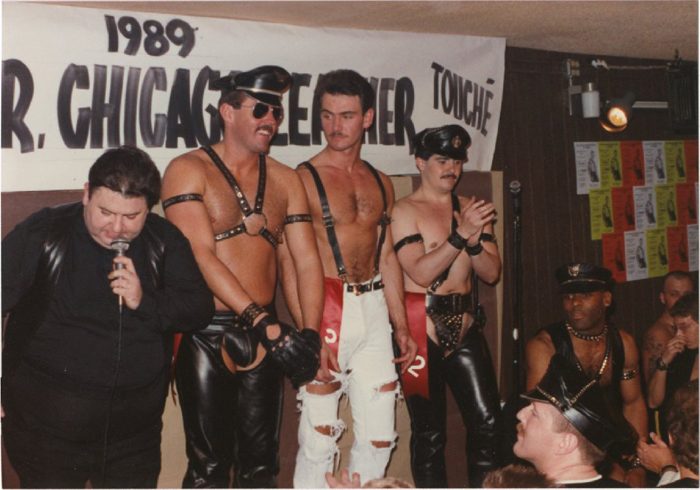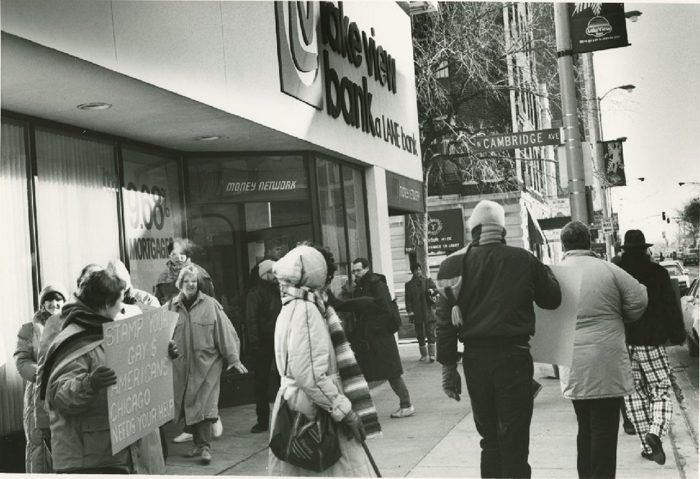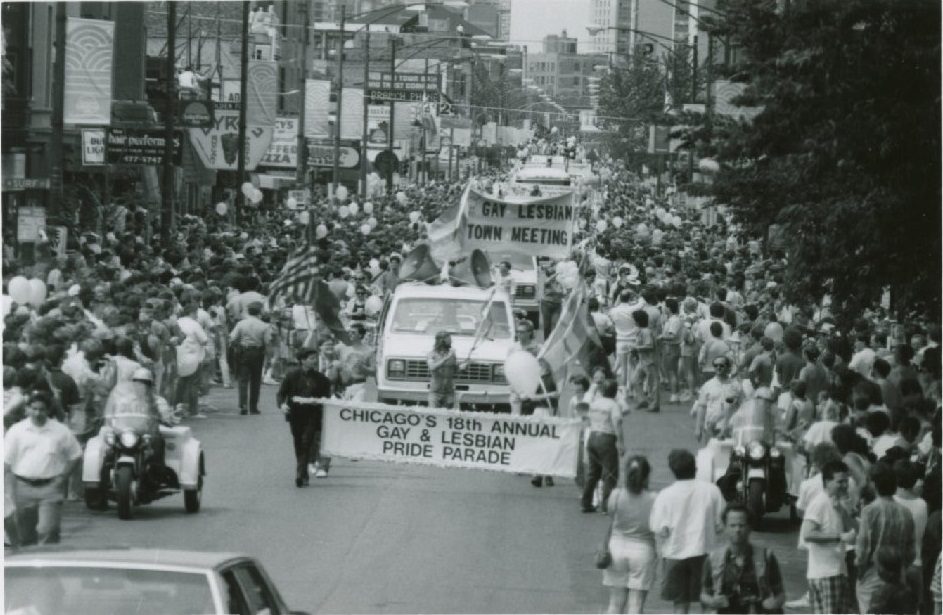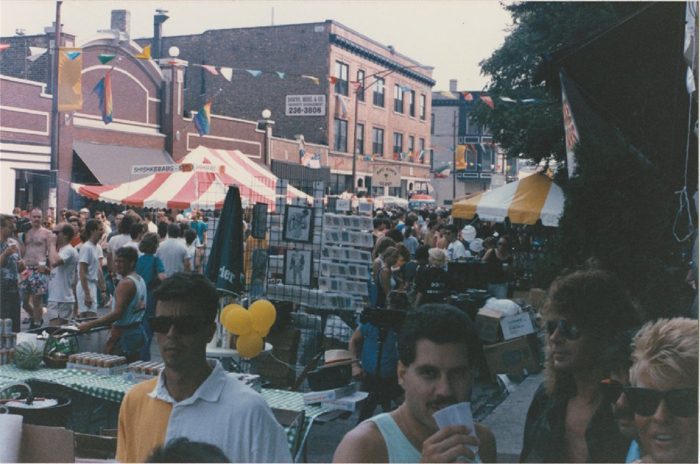Archives intern Brienne Callahan talks about a newly processed photograph collection that highlights Chicago’s LGBTQ nightlife and rights activism in the 1980s and 1990s.
After years of gay rights activism in Chicago, Lee A. Newell II worked as a nightlife photographer for two LGBTQ publications—Chicago’s Windy City Times and the Michigan-based Metra Magazine—between the late 1980s and mid-1990s. In 1997, he donated approximately 13,000 of his photographic prints and negatives to the Chicago History Museum.

Contestants line up for the 1989 Mr. Chicago Leather competition at Touché, a leather bar in Rogers Park. CHM, ICHi-089092
The majority of Newell’s collection consists of images from local LGBTQ bars, mostly in the Boystown area, of everything from casual shots of staff and patrons to parties and special events. Newell also documented the leather scene in Chicago; many of the images are of leather competitions at bars and other venues, including International Mr. and Ms. Leather, Mr. Mid-America Leather, and numerous others.

Couples dance during a country and western night at Carol’s Speakeasy in Old Town. CHM, ICHi-089101
True to his civic engagement roots, Newell also put his camera to use in the daytime to document protests—such as the Gay $ protest of Lakeview Bank—and activism and special events, including the Pride Parade (from 1986 to 1996) and Northalsted Market Days. In addition, Newell donated photographs taken for LGBTQ-focused organizations, such as Gay Horizons (a precursor to the Center on Halsted).

Protesters picket in front of Lakeview Bank, c. 1987. CHM, ICHi-089115

A view of the start of the eighteenth annual Pride Parade in Boystown, June 1987. CHM, ICHi-089096

Visitors and vendors at Northalsted Market Days, July 1990. CHM, ICHi-089098
Newell, a 2013 inductee into the Chicago Gay and Lesbian Hall of Fame, provides important documentation of Chicago’s LGBTQ community as the fight for LGBTQ rights was gaining prominence in American life, against the backdrop of the AIDS crisis. The collection’s focus on leather also documents the role Chicago has played in that subculture, and the number of prominent events that began in Chicago and continue today. Finally, Newell’s photographs provide casual, candid looks into a number of LGBTQ establishments, many of which are no longer in business.
The Lee A. Newell II visual materials collection is now open for research and can be accessed at the Chicago History Museum’s Research Center.